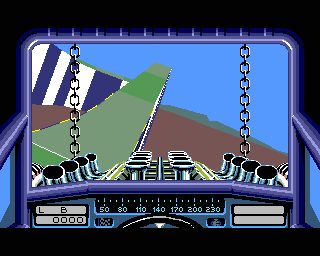Need for Speed: Underground is a street racing game developed by Pocketeers for the Game Boy Advance and released in 2003. This handheld adaptation of Electronic Arts' popular racing series, The Need for Speed, represents one of the most technically ambitious driving games attempted on Nintendo's portable hardware. It uses a fully polygonal engine that renders both cars and tracks as texture-mapped polygons.
The original Need for Speed: Underground had revolutionized the franchise by shifting focus from exotic supercars and scenic locations to the underground street racing scene, complete with car customization, neon lighting, and urban environments. This Game Boy Advance version successfully captures the essence of that transformation, bringing the fast-paced world of illegal street racing to a portable format with faithful results.
What sets this adaptation apart from other Game Boy Advance racing games is its technical achievement in implementing true 3D graphics on this limited hardware. While most handheld racing games of the era relied on sprite-based graphics or simple scaling effects, Pocketeers opted for a fully polygonal approach that renders vehicles and environments as textured 3D models. This decision results in a visual presentation that genuinely resembles the PC/console counterparts, despite the lower resolution graphics.
The game engine's polygonal foundation allows for proper 3D racing mechanics, including realistic car physics and authentic track layouts that mirror the urban environments of the PC version. The texture-mapped surfaces provide convincing representations of city streets, tunnels, and industrial areas, while the car models retain the distinctive styling and proportions. The frame rate remains surprisingly stable despite the hardware limitations, maintaining smooth gameplay even during intense racing sequences.
Players engage in various racing modes, including circuit races, drag competitions, and drift challenges, each requiring different driving techniques and vehicle setups. The car customization system, a crucial element of the Underground experience, remains largely intact, allowing players to modify their vehicles' characteristics and visual appearance through various upgrades.
Compared to other Game Boy Advance racing games like V-Rally 3 or F-Zero: Maximum Velocity, Need for Speed: Underground is a much more mature game and a more faithful racing simulation. If you think about Game Boy games like Top Gear Rally, released only a few years before, the technical advancements are impressive.
The audio design effectively supports the underground racing atmosphere with appropriate engine sounds and environmental audio cues. While the Game Boy Advance's audio capabilities prevent the inclusion of licensed music tracks that characterized the console versions, the sound effects complete the experience with engine roars, tire screeches, and collision impacts.
One of the most impressive aspects of this adaptation is how completely it captures the console experience despite the significant hardware limitations. The street racing atmosphere, complete with neon-lit urban environments and modified import cars, translates convincingly to the portable format. The career mode provides longevity, offering progression through various racing challenges and vehicle unlock systems. You can build your reputation in the underground racing scene, earning money to purchase new cars and performance upgrades while advancing through increasingly difficult races.
Need for Speed: Underground for Game Boy Advance represents a technical achievement that demonstrates the potential of 3D racing experiences on portable hardware. Pocketeers created an adaptation that not only pushes the boundaries of what's possible on the Game Boy Advance but also maintains the authentic feel and gameplay depth of the original game.
The success of this edition convinced EA to create also the GBA version of Need for Speed: Most Wanted a few years later.














